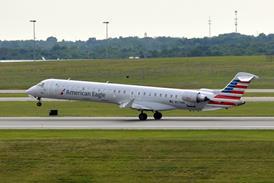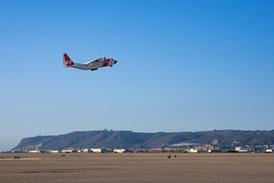GUY NORRIS / LOS ANGELES
Boeing, Rolls-Royce step up efforts to develop technology to meet stricter Stage 4 requirements across product range
Boeing and Rolls-Royce plan to begin flight tests of an experimental engine noise reduction package on a Trent 800-powered Boeing 777-200ER in mid-September as part of longer term efforts to find solutions across the product range to meet toughened Stage 4/QC2 requirements. The move mirrors rival General Electric Aircraft Engines' work to develop a quieter version of the CF-6.

The Quiet Technology Demonstrator (QTD) being undertaken by Boeing and R-R could pave the way for noise suppression systems that the airframe manufacturer aims to offer to Boeing 747 operators from mid-2003. The company has stepped up studies in airframe and engine-related noise suppression following demands, particularly from cargo operators, for urgent action because of next year's implementation of new departure noise levels at London's Heathrow airport known as Quota Count 2 (QC2). Operators believe that if they can meet the new Heathrow requirements, they can meet noise legislation anywhere.
QTD technology, which consists chiefly of sawtooths, or chevrons, around the primary and secondary exhaust nozzles as well as extended areas of acoustic lining, is "applicable to a wide range of products", says Boeing noise engineer Belur Shivashankara. The chevrons generate vortices and enhance the mixing of fan and core jet streams.
For the tests the QTD is mounted on a loaned American Airlines-owned 777. The aircraft is fully compliant to the future noise requirements, but Boeing says the type provided an ideal engine/airframe testbed.
The main purpose of the tests, says Shivashankara, is to validate the analytical and predictive tools used to develop the concept, such as computational fluid dynamics, as well as verification of various trials, including full-scale static tests. The QTD will use two primary nozzle shapes selected after scale model tests at the Boeing Low Speed Aeroacoustic site.
The flights are due to get under way with the first of the two primary test nozzles from 18-20 September. A second phase, lasting 10 days, is then planned in which primary and secondary nozzle effects will be tested. Shivashankara says jet noise reductions in the order of 3 EPNdB are expected.
The completely new fan case has 8.8m2 (95ft2) of acoustically treated liner, 30% more than a standard Trent 800 inlet. The increase is achieved by deleting, for experimental purposes, an electronic engine control cooling inlet and a pressure sensor normally located near the inlet lip. The team predicts fan noise reductions of around 1.2EPNdB on the ground, and as much as a 7EPNdB reduction in the familiar fan generated "buzzsaw" noise heard inside the cabin.
R-R's rival General Electric is also doing similar work and plans to make its chevron nozzle noise reduction work production standard on the CF6 as early as 2003. The company is working with Airbus and Boeing to test it for retrofit and application in production.
Testing on scale models, underway since 1995, is set to continue until the end of the year.
GE CF6 advanced applications programme general manager Jerry Schoener says that of 60 configurations tested, "we have whittled them down to a final three that will go on to full testing".
Full-scale static engine tests will be conducted on an external nozzle centrebody design, suitable for the Airbus A300/A310, in the third quarter of next year. Similar tests for two internal nozzle centrebody designs should begin in the fourth quarter of 2002. The two Boeing-type configurations are believed to be tailored for the 747 family, which are thought to be the most threatened by QC2 rules.
Tests will verify noise reduction benefits from the chevron design which Schoener says has demonstrated a 3.5dB reduction in peak jet noise levels, although the overall "perceived" reductions are around 1dB. The chevron will be offered as part of an overall package of inlet liner, fan aft case and fan thrust reverser treatments.
The tests will also address the impact of the chevron on thrust levels which Schoener describes as "the biggest concern". He adds "there is measurable degradation but there are some things we can do about that". GE admits the most likely compromise means reducing exhaust gas temperature, but it believes the payoff will be its impact on residual values of CF6 powered aircraft.
Source: Flight International























